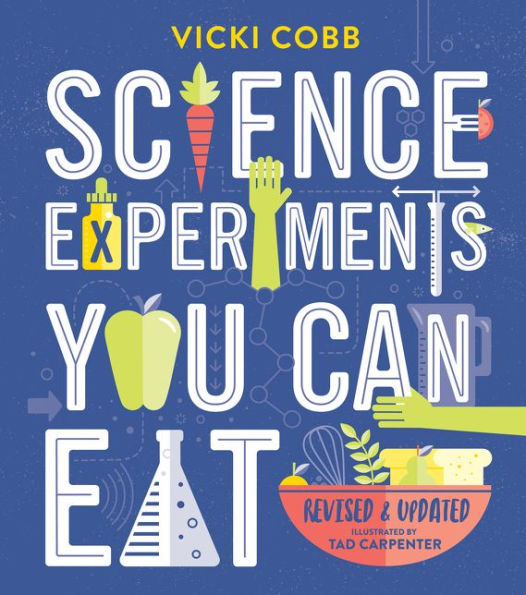Throughout the holiday season, there are plenty of opportunities for solitude. Think about the pre-dawn hours you spent circling the mall parking lot on Black Friday, or trying to wrap gifts in your freezing garage with mittens on, or cramming AA batteries into a clearly marked AAA compartment for that last toy that belongs beneath […]
Incredible Edible
Experiments
Ever wonderwhat makes popcorn pop? why cakes rise? how jelly gels?
Your kitchen will be transformed into a laboratory worthy of a mad scientist as you make startling discoveries about how cabbage can detect acid, how bacteria makes yogurt, and how decomposed sugar turns to caramel. Then after a long day at the lab you can relax and eat your results: soup, biscuits, pretzels, cupcakes, or cookies.
Vicki Cobb's seminal book has been revised and updated to encompass advances in modern technology but still provides what all kids want: a legitimate excuse to play with their food!
Author Biography:
VICKI COBB, a New York City native, received her bachelor's degree in zoology from Barnard College and her master's degree in secondary science education from Columbia University. She has written many science-related books for young readers, and was the creator and host of "The Science Game," a television show. Ms. Cobb lives in Mamaroneck, New York, with her two sons.
Incredible Edible
Experiments
Ever wonderwhat makes popcorn pop? why cakes rise? how jelly gels?
Your kitchen will be transformed into a laboratory worthy of a mad scientist as you make startling discoveries about how cabbage can detect acid, how bacteria makes yogurt, and how decomposed sugar turns to caramel. Then after a long day at the lab you can relax and eat your results: soup, biscuits, pretzels, cupcakes, or cookies.
Vicki Cobb's seminal book has been revised and updated to encompass advances in modern technology but still provides what all kids want: a legitimate excuse to play with their food!
Author Biography:
VICKI COBB, a New York City native, received her bachelor's degree in zoology from Barnard College and her master's degree in secondary science education from Columbia University. She has written many science-related books for young readers, and was the creator and host of "The Science Game," a television show. Ms. Cobb lives in Mamaroneck, New York, with her two sons.

Science Experiments You Can Eat (B&N Exclusive Edition)
256
Science Experiments You Can Eat (B&N Exclusive Edition)
256Hardcover(B&N Exclusive Edition)

Product Details
| ISBN-13: | 9780062377296 |
|---|---|
| Publisher: | HarperCollins Publishers |
| Publication date: | 08/01/2023 |
| Edition description: | B&N Exclusive Edition |
| Pages: | 256 |
| Sales rank: | 60,473 |
| Product dimensions: | 8.00(w) x 9.25(h) x 0.60(d) |
| Age Range: | 8 - 12 Years |
About the Author
Videos

Customer Reviews
Explore More Items
This nonfiction reader compares and contrasts two unlikely animals: a blue whale and a mosquito! Readers will learn
What if a triceratops and a spinosaurus had a fight? Who do you think would win? Learn amazing facts to compare and contrast these two awesome dinosaurs!
This nonfiction Reader compares and contrasts
Iggy Peck is an architect at his very core: When
Pagford is, seemingly, an English idyll, with a cobbled market square and an
This edition of Harry Potter and the Prisoner of Azkaban has a gorgeous new cover illustration by Kazu Kibuishi. Inside is the full text of the original novel, with decorations by Mary
Harry Potter has never been the star of a Quidditch team, scoring points while riding a broom far above the ground. He knows no spells, has never helped to hatch a dragon, and has never worn a cloak
Inspired by her blockbuster phenomenon Wonder, R. J. Palacio makes her graphic novel debut with an
Más de 6 millones de personas se han enamorado de La lección de August, el libro que inspiró el movimiento ELIGE SER AMABLE. Ahora la historia de Auggie está en la
